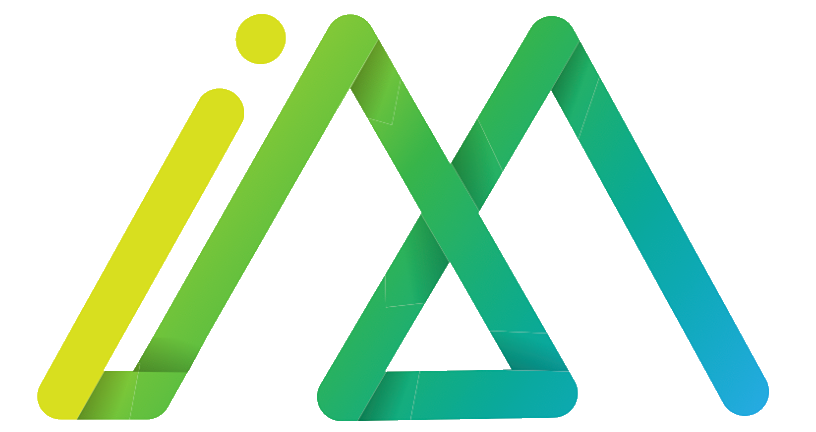Moving Companies in Georgia
Last Updated: 07/11/2025
We’ll find you the perfect movers for the Peach State. Use iMoving to shop, compare, and book your Georgia moving company.







Georgia Moves with iMoving

Georgia has plenty of Southern charm, and we’ve got the movers to match. If you’re planning a Georgia move, use the iMoving marketplace to easily shop, compare, and book a custom move with your Georgia movers - all online, and no house calls required.
With over 1000 movers in our marketplace, the iMoving team makes sure each and every one of our carriers is up to the task. Before we let a mover into our network, we check customer reviews, safety records, certifications, and more. We even call in and pretend to be customers to keep our carriers honest.
With over 30 years of experience under our belts, the team at iMoving is here to revolutionize the relocation game.
We’ve learned what works, and we’ve ironed out the challenges of shopping and booking movers. If you’re ready to make your move easier than ever, tell us more about your Georgia move and we’ll get you packed.
Georgia Moving Insights: Budget Smart with Up-to-Date Info
Last Updated: 07/12/2025
Our pricing insights are powered by a dynamic blend of real-world data. We aggregate information from thousands of quote requests, successfully completed moves, over 3,000 verified mover tariffs, and user activity across our marketplace.
Local Moving Cost
Just Booked: Recent Georgia Moves
iMoving is the go-to choice for Georgia moving. Here are some recent moves to prove it:
Compare the Top 27 Georgia Movers
Last Updated: 07/12/2025
Discover Georgia’s best moving companies! We update this list daily to highlight top performers and bring you fresh, reliable options.
Recent Reviews
Reviewing: Amen Movers
Once they arrived it was on point. They moved fast professional, courteous and knew their business. It was a extremely pleasant experience.
Reviewed on: January 17, 2024
Reviewing: Amen Movers
Great crew, did hard work with a great attitude, family friendly and fun to talk with.
Reviewed on: October 16, 2021
Reviewing: Amen Movers
Overall a very good job by the team of movers but, i was rescheduled twice which was inconvenient.
Reviewed on: August 21, 2022
Reviewing: Amen Movers
Amen movers did a great job. Professional and efficient.
Reviewed on: October 02, 2022
Reviewing: Amen Movers
Amen Movers and Carl were great!!! Very courteous and punctual. I would recommend that others use this company for their moving needs. I have nothing but praise (no pun intended) for these guys.
Reviewed on: November 10, 2022
Reviewing: Nimb Moving
Very Professional, patient, personable. Would use them again.
Reviewed on: October 14, 2021
Reviewing: On The Clock Moving
I was a little anxious that morning with all that had to be done. As soon as they walked in and began assessing what they had to move and how they planned to move it, they eased my mind fairly quickly. They were professional and friendly. As the day progressed I was amazed at the amount of care they took handling all of my furniture and fragile items. Absolute attention to detail. I listened as they planned protection of my items and as they communicated the travel path and hand placement on each heavy and awkward lift. Safety, quality and efficiency, all of which are extremely important to me. They moved everything I needed moved in one (very hot) day using organizational skills and professionalism. It's rare you find anyone these days willing to go the extra mile to make it happen and their determination was apparent. As they pulled away when the job was complete, I felt like I was waving good-by to family. I only wish I could hire these 3 men full time. I have recommended them to friends since I met them yesterday.
Reviewed on: July 29, 2022
Reviewing: Our Moving Services
Trust your moving to respectful, knowledgeable, affordable professionals.
Reviewed on: October 07, 2023
Reviewing: Our Moving Services
I need to submit a claim. 2 pieces of our furniture were damaged during the moving.
Reviewed on: January 25, 2024
Reviewing: Our Moving Services
The overall experience was good. The movers were very professional, helpful, and did a good job. IMoving experience was good, but there were discrepancies in communication at times and challenges getting confirmations or getting ahold of a person to verify information. But, overall the total experience was very good.
Reviewed on: July 30, 2024
Reviewing: Big T Moving
Highly recommend this team. They arrived on time and was very careful in moving our items.
Reviewed on: August 03, 2019
Georgia Moving Services Are a Click Away
Every move is different. Whether it’s a home, office, or just a few items of heavy furniture, iMoving provides a whole menu of must-have services for moving in and out of Georgia:
Long Distance Moving
If you're looking for the best long distance moving company in Georgia, iMoving can help. With over 1,000 vetted and verified options, we let you pick and choose the right team for your needs.
It can be tough to sort through all the movers out there, and Georgia is a big place. That's why we only allow trustable carriers to join our network. If they aren't up to our standards, they don't make it into our marketplace. And if they're good enough to be in the iMoving network, we always check in to make sure they're staying honest.
Local Moving
If you're moving within 100 miles and keeping it within the same state, don't worry - iMoving has just the team of local movers for the job. Local moving companies in Georgia can be hard to find on short notice, and it can be a tough search if you don't want to deal with any sketchy operators.
Local movers charge per hour, and per mover. This can make collecting quotes a bit of a pain. How mcuh stuff are you moving? How many miles does it have to travel? How bad's the traffic? We'll do the math. All you have to do is pick the mover that you like the most.
Packing Services
Packing is a pain. Between shopping around for boxes, wrapping and loading those boxes, and hoping those t-shirts are enough to keep your fine china safe, it's usually just easier to let the pros take care of it.
But, shopping for packing services in Georgia isn't so easy. You'll need to sift through tons of options, and it can be hard to tell who's legit, and who's a scam. That's why iMoving makes it easy to find packers you can count on. We make sure our packing teams are prepped and ready with the know-how, experience, and quality materials they need to keep your stuff safe.
Storage Services
You may know the square feet of your new place, but do you know how many of those square feet are usable? If you've overestimated your space (or underestimated the amount of stuff you have), you can book secure storage in Georgia with iMoving.
We make sure our storage providers are held to the same standards as our movers. And what's more, we made sure they offer awesome rates and on-site staff to keep your items under a watchful eye. Whether you need it for a few weeks or you need it for a month, our storage services can keep a roof over the excess.
Commercial Moving
You're running a business, and you need to get it moved quick. At iMoving, we've been there before. And we can get you relocated with minimal downtime and disruption.
The best commercial moving companies in Georgia should be handpicked for whatever business you're operating, whether it's a mom and pop shop or a global HQ. That's why we give you a range of options so you can compare quotes from the best of the best.
FAQ
If you’re looking for premium movers, we’ve got them. iMoving has a huge network of moving specialists who can handle anything from your motorcycle to your Monet. Use our marketplace and search for premium moving specialists to get that extra TLC.
We always recommend booking your movers at least 2 or 3 months in advance. It may seem like a huge window, but it'll give you plenty of time to plan and prepare.
Plus, if you provide a flexible enough moving window, you may end up getting some sweet discounts.
A Georgia move can cost you anywhere from $278 to $8500 and beyond. It all comes down to how much you’re moving, and how far you’re traveling.
Keep in mind, local movers charge per mover, per hour (with about 2 movers per room), and long distance movers charge by weight (or volume) and miles.
To prepare for a move in Georgia, we recommend taking a few important steps. First, make sure you've got a job lined up at your destination. Secondly, downsize as much as possible before shopping for movers.
If you're doing your own packing, box up your stuff starting with the least-used items, and always pack an essentials bag so you aren't stuck rooting through boxes for your toothbrush or clean underwear.
We recommend tipping between 15% and 20% of the total cost of the move, to be divided up between your entire moving team.
Don't forget the driver, either! In the moving industry, tipping is usually accepted and expected.
While there are some rare companies that don't accept a gratuity, it's a good idea to have your wallet at the ready just in case.
